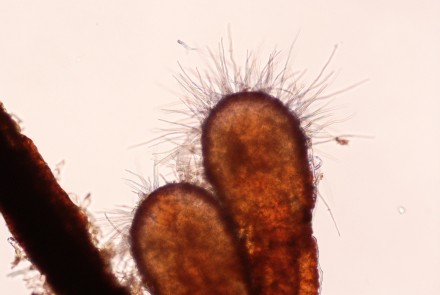Truffle appreciation grows close to home

Not everyone thinks of Canberra as a place to stock up on gourmet goodies, let alone the ANU Research School of Biology. The Canberra & Capital Region Truffle Festival is well underway, and you’ll be surprised at just how close to home truffle research and production actually is.
Dr Celeste Linde has been working with people in the Australian truffle industry who are having trouble producing their crop.
“The truffle research I carried out at ANU was initiated because the truffle industry approached me for help to increase truffle production in Australia,” said Dr Linde.
“Australia is attempting to market truffles — Tuber melanosporum, or Perigord truffles — in the European off-season. However, only 10 per cent of Australian truffiére [truffle farms] produce a viable quantity of truffles.”
Dr Linde investigated why these truffiéres were having such a hard time with their truffle production.
“Nursery trees sold to potential growers did not have adequate truffle colonisation. Thus a grower would prepare the site, buy truffle-inoculated trees — in the process spend approximately $30,000 per hectare — and end up planting trees that did not have adequate truffle colonisation on them,” said Dr Linde.
“Because one does not expect to harvest truffles until after three, sometimes four, years, the grower would then maintain the truffiére for years, spending even more money, but does not know that truffles will never be produced. Some growers have persisted for 10 years before finally abandoning their truffieres.”
“I then recommended to the Australian Truffle Growers Association that a tree certification scheme be brought in and it is currently in the process of being implemented.”
Photo courtesy of Dr Celeste Linde.
Related links
- Source: Truffle appreciation grows close to home, ANU Media release
- Digging in to root out a solution for local truffle growers, The Canberra Times
- Growers at wits' end as truffles fail to show, Sydney Morning Herald online.
